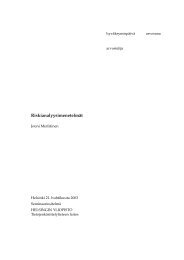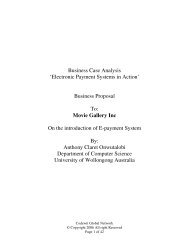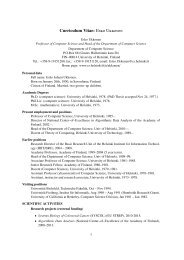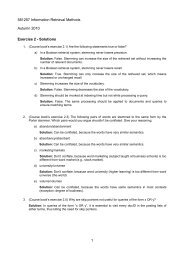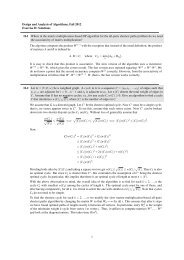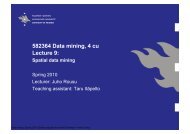Toni Sihvonen (order #92780) 62.142.248.1
Toni Sihvonen (order #92780) 62.142.248.1
Toni Sihvonen (order #92780) 62.142.248.1
Create successful ePaper yourself
Turn your PDF publications into a flip-book with our unique Google optimized e-Paper software.
<strong>Toni</strong> <strong>Sihvonen</strong> (<strong>order</strong> <strong>#92780</strong>) 6<br />
Pevensey Marsh (0-20): A large marsh where Romans built a bridge, then a road pressing further into<br />
Pevensey Bay intrudes onto the low-lying land. It is Britain and, in time, a walled town to defend the crosshome<br />
to swamp creatures and a few tribes of hardy ing. The Roman town was captured by the Saxons durmarsh<br />
men.<br />
ing Vortimer’s rebellion. After 518, the town falls in the<br />
fief of Richard de Warrene, an Occitanian knight. He<br />
Portchester (R. Portus Adurni) (M-20): The west- builds a motte and bailey castle, then upgrades it to ordiernmost<br />
of the Saxon Shore forts, Portchester was cap- nary status with the addition of a stone curtain wall,<br />
tured by Aetheling Port in 501. The Roman wall was towers and a keep. One night he accidentally shoots his<br />
used by the Saxons to defend their burh. After Badon, an wife with an arrow, and her ghost subsequently haunts<br />
ordinary castle was built in the northwest quarter of the the battlements of the castle. The town is the seat of the<br />
Roman walls. In the Second phase, the southeast quarter Bishop of Rochester.<br />
is given over to Augustinians for a priory. Arthur appro- Ruler: Richard de Warrene<br />
priated the castle in preparation for his French campaign Vassal of: Earl Kynniarc<br />
in 526.<br />
Ruler: Sir Childebert<br />
Romney Marsh (P-19, P-20): The largest marsh in<br />
Vassal of: Admiral Theoderic<br />
southern Britain, formed by the<br />
Rother river meeting the sea. The<br />
Quarr Hill (M-21): A queen marsh is the home of Mearsc<br />
of the Belgae tribe was buried<br />
Feonds (marsh demons) and<br />
here in a golden coffin.<br />
primitive swamp men.<br />
Quarry Wood (0-19): A St. Albans (R. Verulamium,<br />
ancient hillfort, garrisoned by<br />
5. Waeclingaceaster) (N-18):<br />
the Regnenses to support the<br />
The site of the death of the first<br />
earthworks at Loose (q.v.). The<br />
British martyr, the town is visited by hundreds of<br />
Saxons slaughtered the garrison<br />
pilgrims each year. The Saxons captured the town<br />
during Vortimer’s rebellion and it<br />
in 495, but Uther Pendragon ousted them for good<br />
was never resettled.<br />
the same year, in his last battle. Ghosts replay Uther’s<br />
death every year on its anniversary. (Ambient 3d20,<br />
Reculver (R. Regulbium) (P-19): A Saxon Shore fort, Divine Miracle 5d20 at St. Alban’s Tomb in the cathethe<br />
mate of Richborough (q.v.) to the southeast. It pro- dral.)<br />
tected the northern entrance to the Wantsum channel<br />
(q.v.). Abandoned after the Roman withdrawal, and St. Leonard’s Forest (N-20): Part of the Forest Perdue,<br />
shunned by Saxons because the ghosts of children mur- it is poisoned and sickly due to the small dragon which<br />
dered by the Romans haunt the ruins. (Ambient 3d20, haunts the wood. The dragon is poisonous, but though<br />
Necromancy 4d20)<br />
it can kill men, it does not eat them afterward.<br />
(Ambient 4d20, Summon Faerie Creature [the Dragon]<br />
Richborough (R. Rutupiae) (P-20): A Saxon Shore 3d20)<br />
fort and the Roman entry point to the diocese of<br />
Britannia. The Saxons captured the town during their<br />
rebellions against Vortigern. Arthur uses it as a staging<br />
point during his invasion of Gaul. The Roman walls are<br />
mined for building stones during Phase Three.<br />
Saltwood Castle (P-20): This small castle dates from<br />
the Third Phase. The original owner defied Arthur, and<br />
the castle reverted to the King.<br />
Ruler: Sir Rupert, later castellan<br />
Vassal of: King Arthur Pendragon<br />
Ridgeway: A prehistoric trade route along the White<br />
Horse Hills from the Thames Valley to Salisbury Plain.<br />
Rochester (R. Dubrobrivae, 5. Hrofaceaster) (0-19):<br />
In AD 43, the invading legions of the Roman Emperor<br />
Claudius swam across the Medway River at this relatively<br />
shallow point in the face of a larger British army<br />
camped on the opposite bank. The British fled and the<br />
Saxonbury (0-20): A vein of iron in these hills has been<br />
mined for centuries. The Saxon ceorls and slave-laborers<br />
who give this village its name live in stone huts occupied<br />
by Roman and Celtic miners before them. King Arthur<br />
grants the mines to Earl Celyn during the Third phase.





